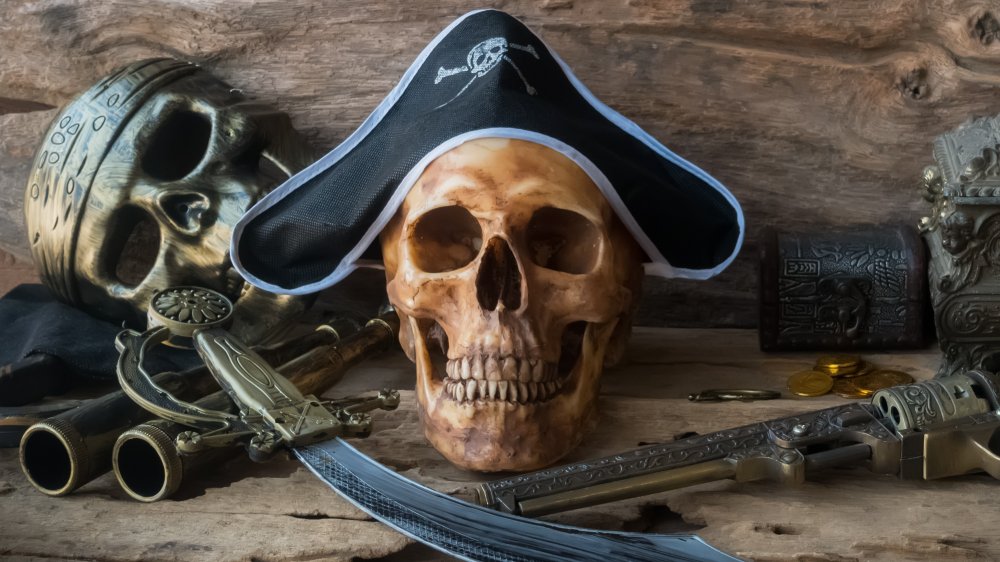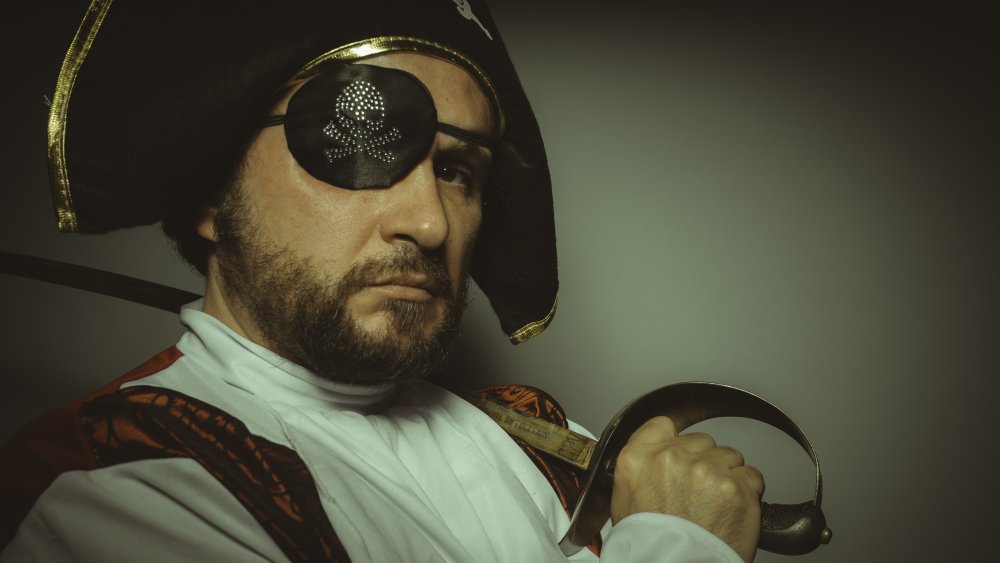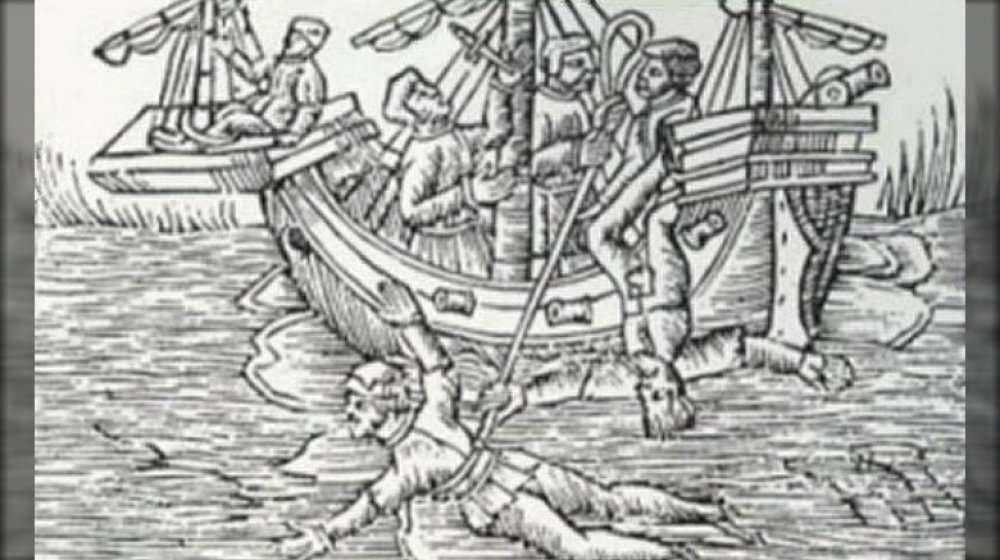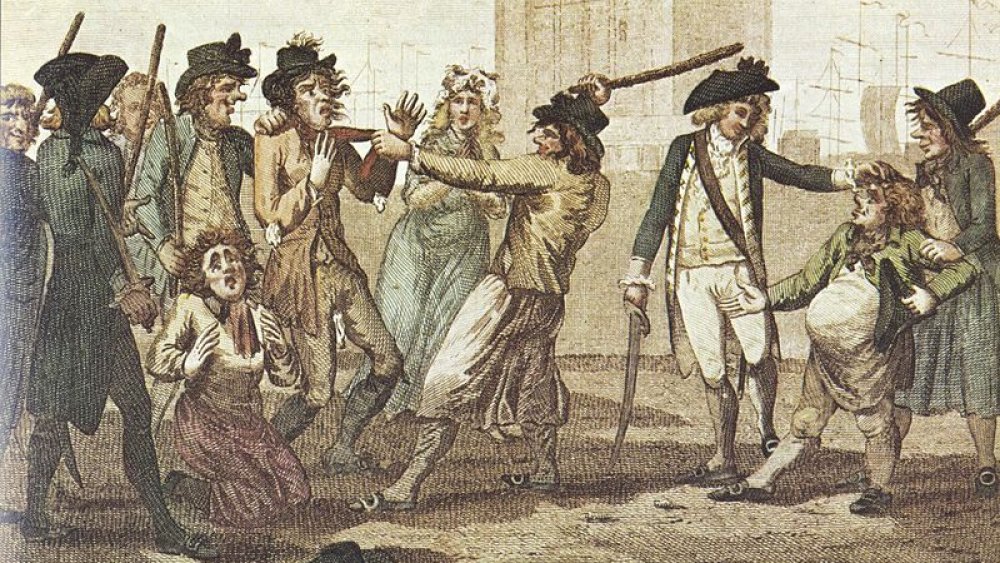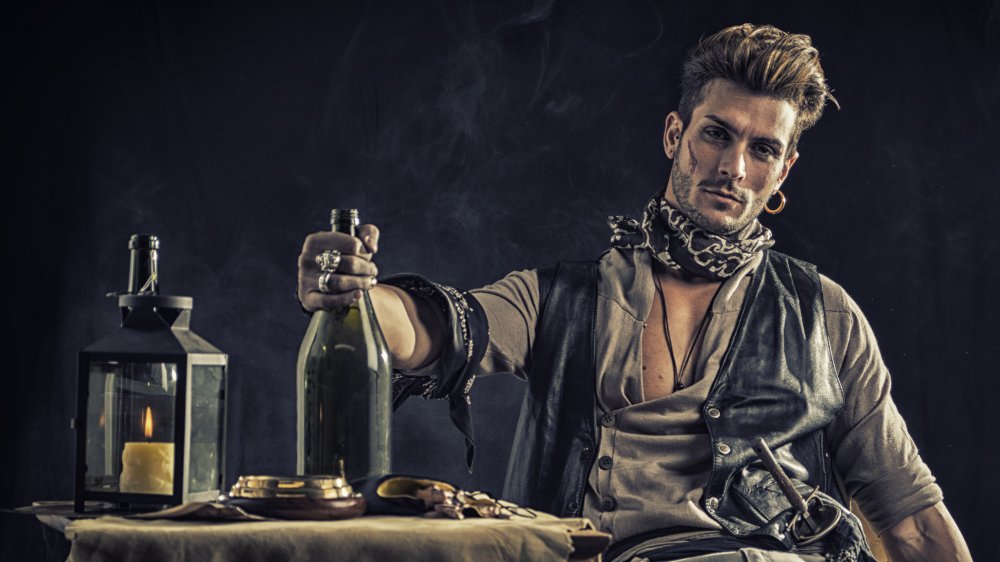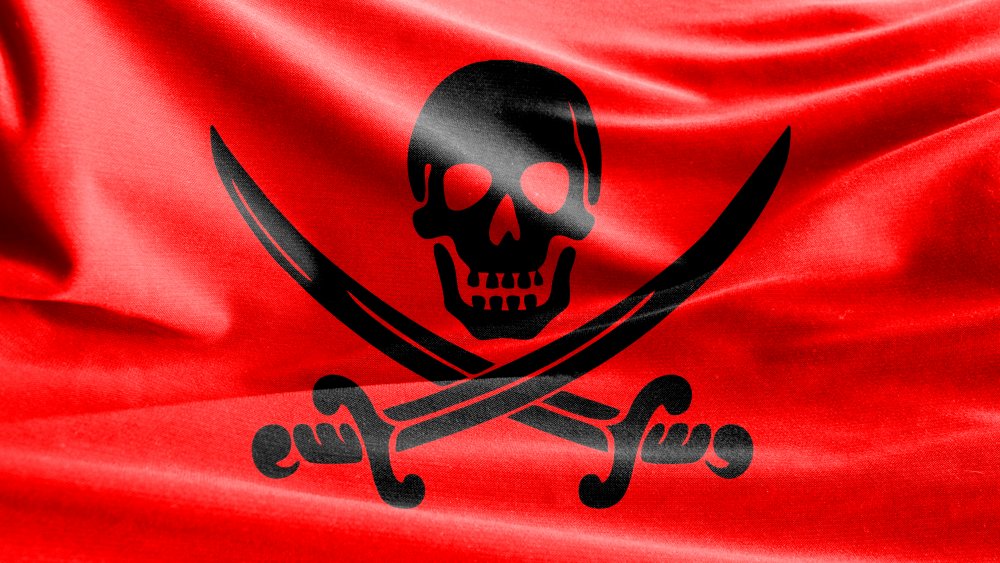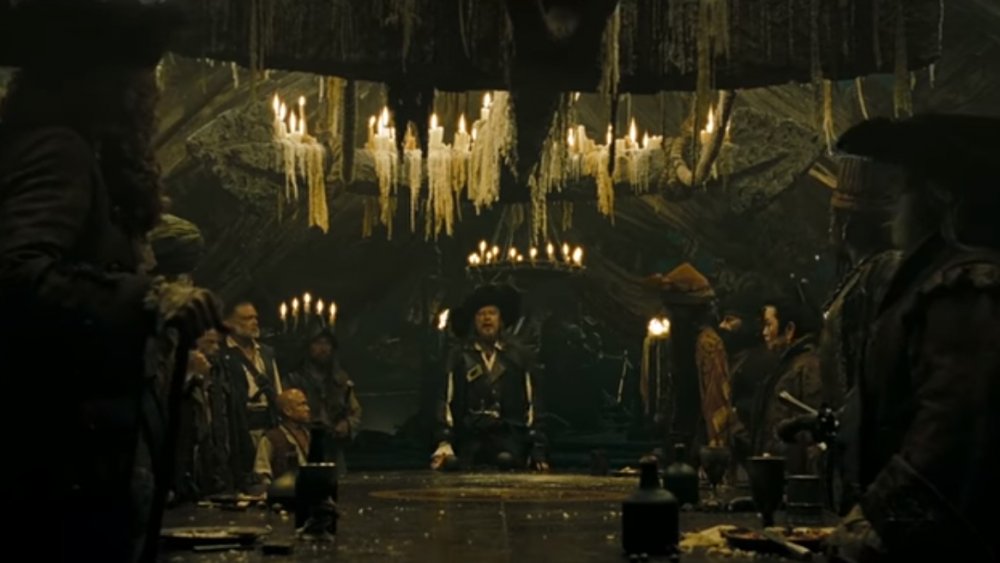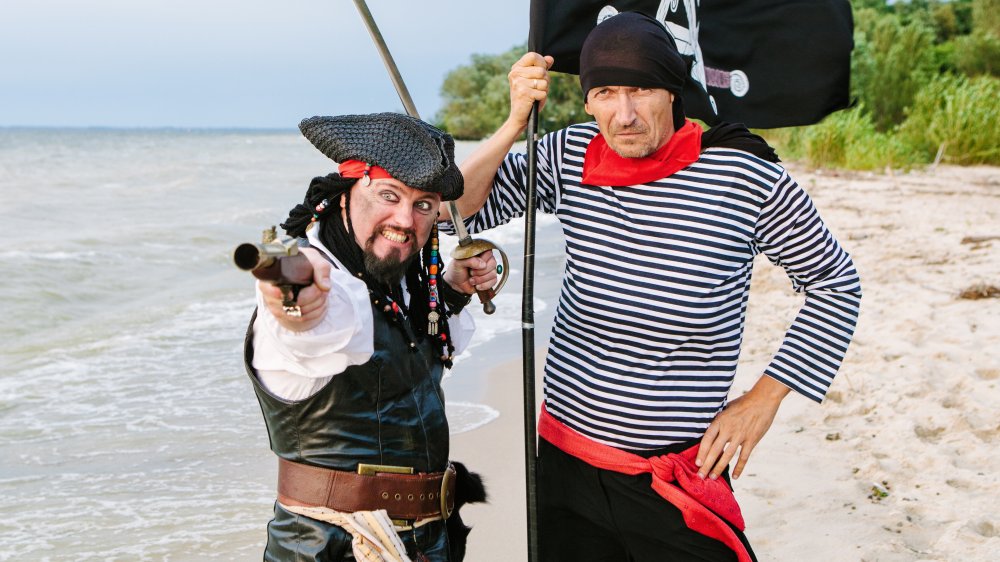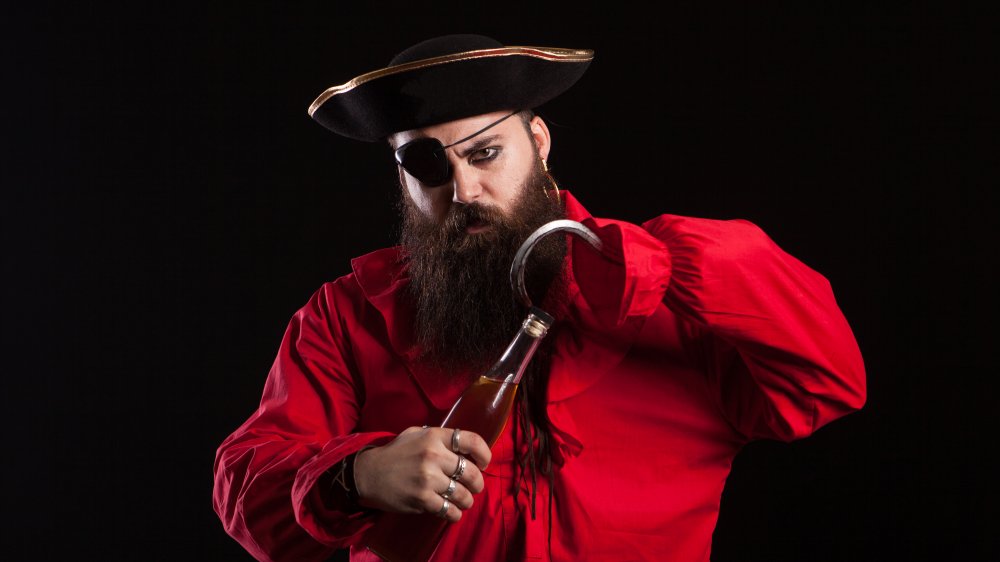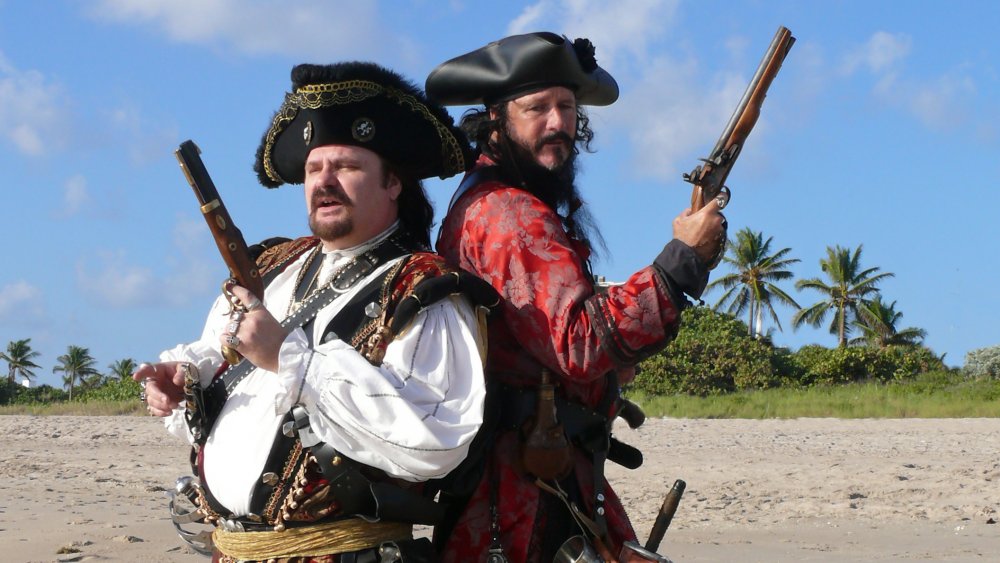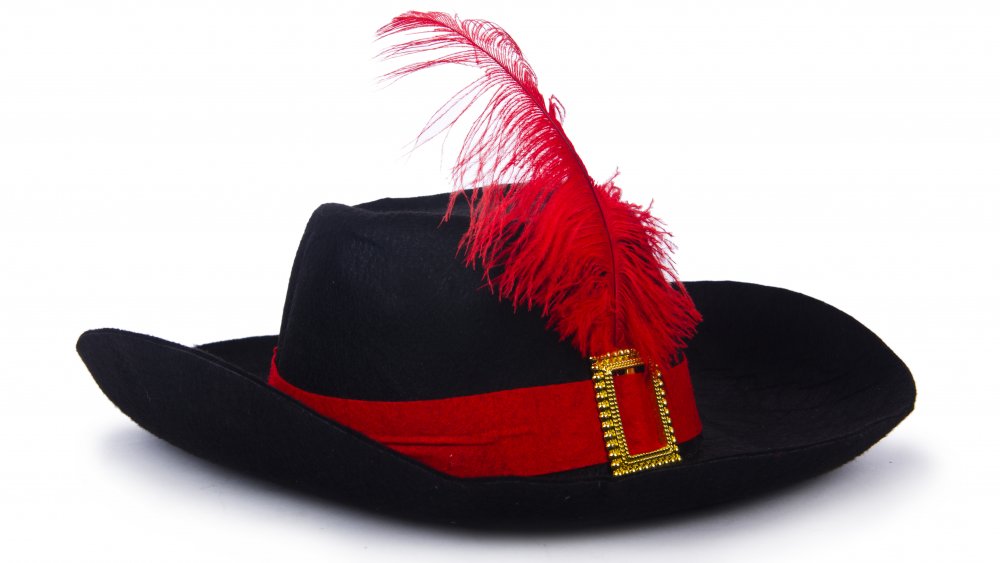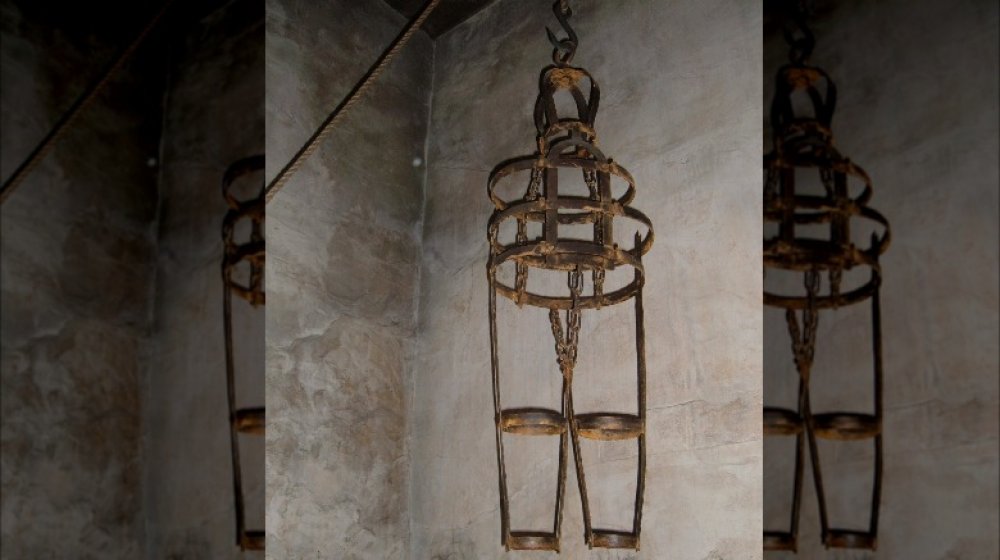Strange Pirate Traditions You Didn't Know About
You knew about the parrots and the Jolly Roger flag and the part where they have to say "arrr," "avast," and "shiver me timbers" all the time because it's like pirate law or something, but there are a bunch of other pirate traditions that you've probably never heard of before. And it's not because they were especially boring traditions that deserve to be forgotten, either, like if there was a pirate tradition about what color socks you were supposed to wear on Tuesdays. On the contrary, these traditions are alternately cool, cruel, and downright progressive and yet somehow never seemed to make it on board the Black Pearl with Captain Jack Sparrow, to the detriment of us all.
So we're here to right the wrongs of decades of pirate entertainment by revealing some of the lesser-known traditions from the Golden Age of Piracy (1650s to 1730s), and take note, Disney. We fully expect to see some of this stuff in the next installment of Pirates of the Caribbean. Send royalty checks to Grunge.com, please.
The truth about those pirate eyepatches
The ratio of one-eyed pirates to two-eyed pirates seems rather unlikely. What is it about piracy in particular that seemed to lead to so much random enucleation? Surely you'd see the same or similar rates of eye pokey-outedness in soldiers and other semi-violent professions, but the rate seems rather disproportionately high among scallywag-types. Why is that?
Well, would you believe that a lot of eyepatch wearing pirates actually had perfectly functional eyeballs under those patches? That's the theory, anyway. According to Mental Floss, pirates may have gained a reputation as eyepatch wearers not because they were forever winding up on the pointy end of the good-guy's saber, but because it was a handy way to keep your eyes adjusted to constant changes in light. Pirates — or so goes the theory — were constantly having to go below decks and then back above decks, and when there's a battle going on, you don't want to have to wait around for your eyes to become adjusted to the dark. When you keep one of them under an eyepatch, you've always got one peeper ready to guide you to the part of the ship where the rum is stashed whenever the need arises. Or maybe it was just because eyepatches are super cool, and pirates knew it. You never really know.
Keelhauling was more common than walking the plank
What could be more piratey than walking the plank? Even though when you think about it, walking the plank is kind of a stupid and boring way to execute someone. Still, this bizarre method of murdering someone is one of the most historically accurate facts about pirates ... right? Well, believe it or not, walking the plank wasn't really a thing. In fact, there are no records of it being used during the Golden Age of Piracy. Instead, pirates used this other much more brutal form of execution, which was called "keelhauling."
Now, in case you're not nautically inclined, a ship's keel is the bottom part of the boat, where the two sides of the hull meet in the middle. And "hauling" is exactly what it sounds like. It's basically a synonym for dragging so you can pretty easily put two and two together and figure out exactly what this practice entailed. According to The Way of the Pirates, keelhauling was a form of punishment (usually fatal) in which the unfortunate pirate would be tied to a rope, weighed down with chains or cannonballs, and then dragged under the ship. This usually either meant drowning or, if one was lucky, dying from blunt force injuries when smacked with great force against the hard wooden surface of a moving object. Walking the plank sounds pretty pleasant by comparison, doesn't it?
The strange tradition of getting shanghaied
In the fourth installment of Pirates of the Caribbean — you know, the one no one saw — Jack Sparrow wakes up on board Blackbeard's ship. "Many a man's woken up at sea, no idea what, when, wherefore or why," he's told by a less-than-sympathetic crewmate. And that's actually true. Getting "shanghaied" was a common experience during the Golden Age of Piracy. When there was a shortage of willing men to volunteer for dangerous jobs at sea (which was most of the time), ship owners would hire "press gangs" to drug or knock out vagrants or just abduct very drunk people, and the next day, those men would wake to a raging headache and a brand new job on board a sailing ship.
But here's the funny part. It wasn't just pirates who were shanghaiing people, even though it totally seems like a piratey thing to do. The practice was actually legal, and it was used to press young men into service aboard all kinds of vessels, including naval ships. Shockingly, it was a long time before shanghaiing became officially not-a-thing anymore. In fact, it was well after the Golden Age of Piracy. According to Amusing Planet, shanghaiing was officially outlawed in 1915, not because it was immoral but because it was no longer very practical as ships' captains preferred skilled sailors, not clueless dudes who'd been plucked off the streets.
The big hoop earrings weren't just a fashion thing
Everyone knows pirates were fond of large, golden hoop earrings, but they weren't just a fashion statement. Pirates wore gold earrings because they were valuable, and in the likely event of their death, they hoped that some kind person would see the earring and use it to buy them a proper funeral. Which does rather seem like wishful thinking since whoever killed them probably isn't going to care that much about their mortal soul. There was always the chance that a pirate's death would happen on board his own ship, surrounded by crewmates, and after a wreck at sea, it was also possible that his body would wash up on the beach outside of some Christian town or another. Some pirates would even engrave the name of their home port into their earrings in the hope they'd be returned home.
According to Live Science, though, pirates had other reasons for wearing earrings. Young sailors would get an earring to commemorate the first time they crossed the equator or rounded the southern tip of South America. And there were superstitions about them, too. Pierced ears were thought to defend against seasickness (because that makes perfect sense), cure poor eyesight, and protect a sailor from drowning. If just one of those things was true, well, that was worth a hole in the ear for sure. If none were true, then fashion. Arrr.
Beware the bloody red flag
Everyone knows that the Jolly Roger, or the black and white skull and crossbones flag, was only flown by pirate ships. But pirates had another flag, too, which was called the "bloody red flag." If you saw the first flag, you went, "Crap, pirates," and you prepared yourself to lose all your stuff and then face the wrath of whoever your employer was. If you saw the second flag, you went, "Craaaap! Pirates!" And then you maybe jumped overboard because you were basically dead. The bloody red flag was a sign that the pirates didn't intend to take prisoners, and once that flag was raised, there was no longer an opportunity to surrender.
That's a cool little bit of trivia, but it's worth adding that not all pirates used the skull and crossbones symbol, and some even just had a boring, solid black flag instead of one with a scary drawing on it. See, skull and crossbone designs were first used in the late 17th century and became popular by the 1720s. However, according to The Vintage News, the first pirates to actually call their flags "Jolly Rogers" (in the early 1720s) had black flags with creepy images, but they weren't your stereotypical pirate designs. In fact, one even featured a skeleton stabbing a heart. So yeah, the Jolly Roger is way more than just the skull and crossbones, although that's the look that's stood the test of time.
They practically invented democracy
Just in case you doubted that pirates with their peg legs, parrots, and advanced optical technology (eyepatches) were progressive thinkers, here's something you might find surprising. Pirate crews were some of the world's first truly democratic societies. Okay, the Athenians beat them to it by like a thousand years, but democracy was still a pretty novel idea during the Golden Age of Piracy.
Now, before you form a mental picture of pirates as civilized plunderers in curly white wigs, they were still outlaws who murdered and stole for a living, but on their own ships, they had ordered societies where each man had a voice and everything was distributed fairly. According to Mental Floss, a lot of pirates were escaped slaves or the formerly impoverished who were used to living in societies where the rules were skewed against them, and it would've been tough to convince men like that to join up if they thought that's how it would be for them on board.
Pirate democracies even had checks and balances. The captain had most of the authority, but there was a quartermaster whose job it was to hand down punishment. And matters affecting the whole crew were usually held to a vote, and that included the election of a new captain if everyone wasn't crazy about the status quo. Those perks helped make piracy kind of a lucrative career path, which explains why so many guys were keen to sign up.
Pirates had a tradition of gay marriage
Here's something you probably wouldn't have guessed. Pirates pioneered the concept of gay marriage. (Actually, there's plenty of evidence of same-sex marriage in non-Western cultures, but in the West, it was a pirate thing before it was a Massachusetts thing). They spent a lot of time at sea, and most ships would only take on single dudes because nothing kills your swashbuckling ambition like not wanting to mess up your face for the sake of your sweetheart back home. So what happens when there are a bunch of dudes living together at sea for months on end? Those dudes end up pairing off and not just in a "you dropped the soap" kind of way, either.
According to Ancient Origins, the practice was called "matelotage," and it was about more than just a pirate's physical needs. There was also a romantic aspect to it and a financial one, too. The two partners would exchange gold rings and vow to share everything. When one member of the union died, the other would inherit all of his property. And it's not like this was all done in secret, either. It was encouraged in pirate society, and it was such a widespread practice that the horrified French governor shipped two thousand prostitutes to the pirate haven Tortuga in the hopes of ending the practice, because evidently prostitution was way more morally acceptable than allowing two men to be in a committed relationship.
They had workers' comp
Here's something you didn't see in a whole lot of other industries during the 18th century. Pirates had a system of workers' compensation back in the days where, for most people, getting injured on the job could mean permanently losing your livelihood. According to Mental Floss, a lot of pirate ships would grant an injured man enough gold to last the rest of his life if the injury he suffered proved to be career-ending. Some of the numbers have even been recorded, so we know exactly how much an injured pirate might receive. A 1678 memoir written by former pirate Alexander Exquemelin claimed that a missing arm was worth 600 pieces of eight, which equals roughly $100,000 in modern money.
Of course injuries wouldn't always end careers, and pirates were sometimes compensated for injuries in other ways, too. Some would remain employed on board the ship but in less-strenuous positions. Pirates who lost hands or legs would be given crude prosthetics (hooks and peg legs). But what was in it for everyone else? Well, if you knew that a disabling injury would be compensated, you were a lot more likely to take risks, and a ship full of pirates who were all willing to take risks was a much more effective plundering machine. So that workers' compensation policy didn't just benefit injured men, it benefited everyone.
They had specific rules about stealing
Stealing was pretty much the whole basis of the pirate industry. As a pirate, you could steal from other ships, and you could steal from random people you encountered while you were at port, but you couldn't steal from other pirates. It was part of pirate code, and despite what Captain Barbosa has to say on the matter, pirate code was pirate code (it wasn't just guidelines). According to Mental Floss, some of the code was actually written down, as in this example from the pirate ship Royal Fortune: "If [any pirate should] defraud the company to the value of even one dollar in plate, jewels, or money, they shall be marooned. If any man rob another, he shall have his nose and ears slit, and be put ashore where he shall be sure to encounter hardships."
There were other doctrines, too. On the Royal Fortune, sneaking a woman on board was punishable by death, and gambling wasn't allowed, either. All disputes had to be settled on land, but it was cool if those disputes were settled in a duel, just so long as no one had to mop blood up off the deck.
Pirates were a superstitious lot
People who live uncertain lives often develop superstitions to help give them a sense of control over their lives. And pirates had pretty uncertain lives. They depended on the weather to deliver them safely to their destination, and surviving a battle was often something that came down to luck. So it's really not very surprising that the list of pirate superstitions is long and weird.
According to Brethren of the Coast, pirates often wore feathers in their hats, but it wasn't a fashion thing. Many believed that a feather taken from a wren slaughtered on New Year's Day would protect against shipwrecks for an entire year. That sucks for the wren, but at least pirates who followed that tradition looked dapper while doing it. Other traditions were not so aesthetically pleasing. For example, pirates would often get a hair cut and trim their nails before a voyage because it was thought that cutting your hair or nails during a voyage would anger the god Neptune. Evidently, a haircut and manicure was thought to be an offering to the goddess Proserpine, and you didn't want to be flattering Proserpine when Neptune was the one deciding your fate.
Pirate superstition governed the way you behaved when boarding a ship, too. It was thought to be bad luck to board a ship with your left foot first, for example, and once you were on board, it was especially bad luck to look back towards shore.
Pirate plundering 101
Hollywood loves epic battles at sea, but the truth is that pirates liked to avoid chasing ships and exchanging fire as much as possible. Holes in your ship aren't really great for your longevity, and pirate ships were often older and not as well-equipped as their targets. So it makes sense that most pirates liked to be able to grab cargo and go without having to engage the enemy.
That means that pirates often had to resort to trickery in order to lure a victim close enough to strike. They might raise a fake flag, for example, so they could just sail right up to their victim and not arouse suspicion. Or they might pretend to be in distress, which would lure their good Samaritan in closer. Once their target was in range, the pirates would raise the Jolly Roger, fire a warning shot, or even board the enemy ship and make a bunch of fierce noises. If the crew of the target ship was sufficiently freaked out, they'd surrender without bloodshed. And most ships — with the exception of military vessels — were more than happy to surrender if it meant saving their own necks. In fact, according to Pirate Ship Vallarta, a lot of merchant ship captains had a special cargo on board reserved specifically to give to pirates in the event of an attack.
A pirate's punishment was a strange and sadistic tradition
This isn't exactly a tradition of pirates, per se, but it's something that was traditionally done to pirates so we're including it as a "pirate tradition." Piracy was obviously frowned upon by polite society, and the punishment for engaging in such a profession was pretty severe. Not only was a pirate executed by hanging, but his body was displayed in a "gibbet" while it rotted away, so that anyone who happened to see it would know that there was no mercy given to any man who engaged in terror on the high seas.
According to Philadelphia Oddities, the gibbet was essentially an iron frame that contained the body of a recently hanged man. It was designed so that the person's rotting corpse wouldn't fall apart prematurely, and that way, lots of people would have an opportunity to gawk. If the gibbet and its unfortunate contents did their job, there would be fewer pirates on the high seas. And we all know how well that worked out.
